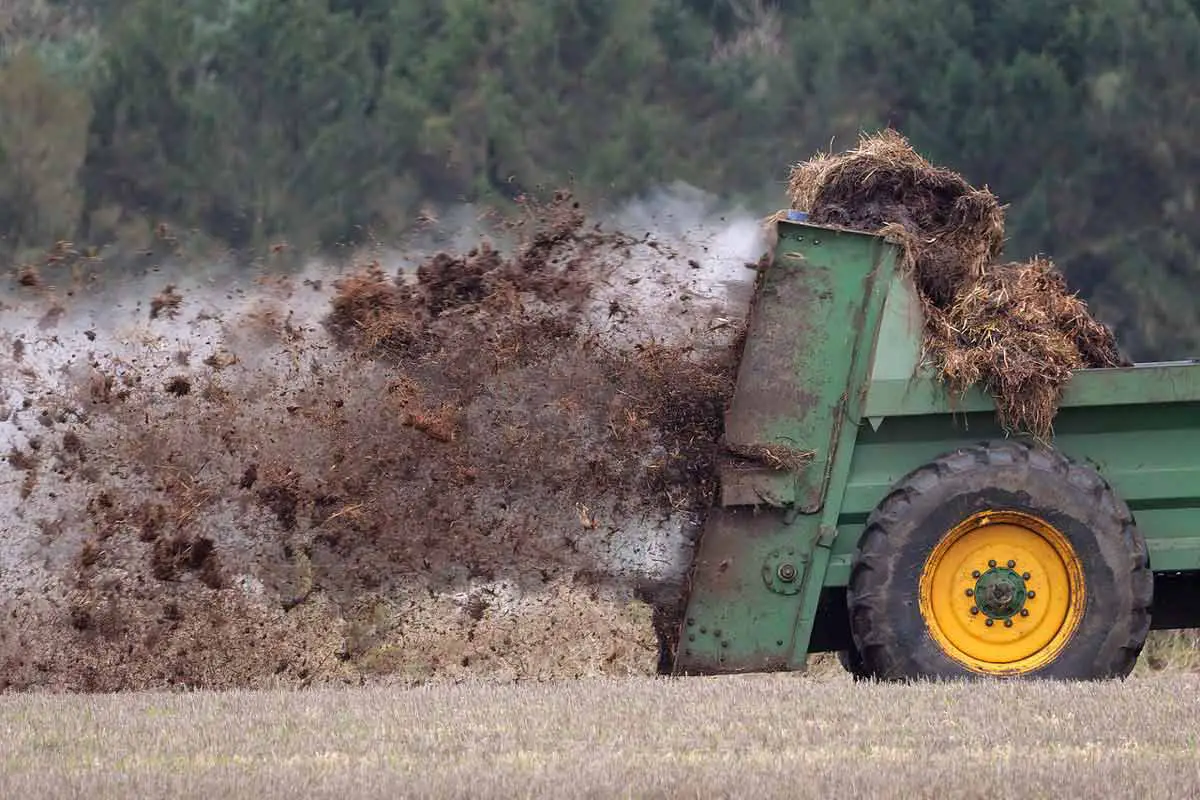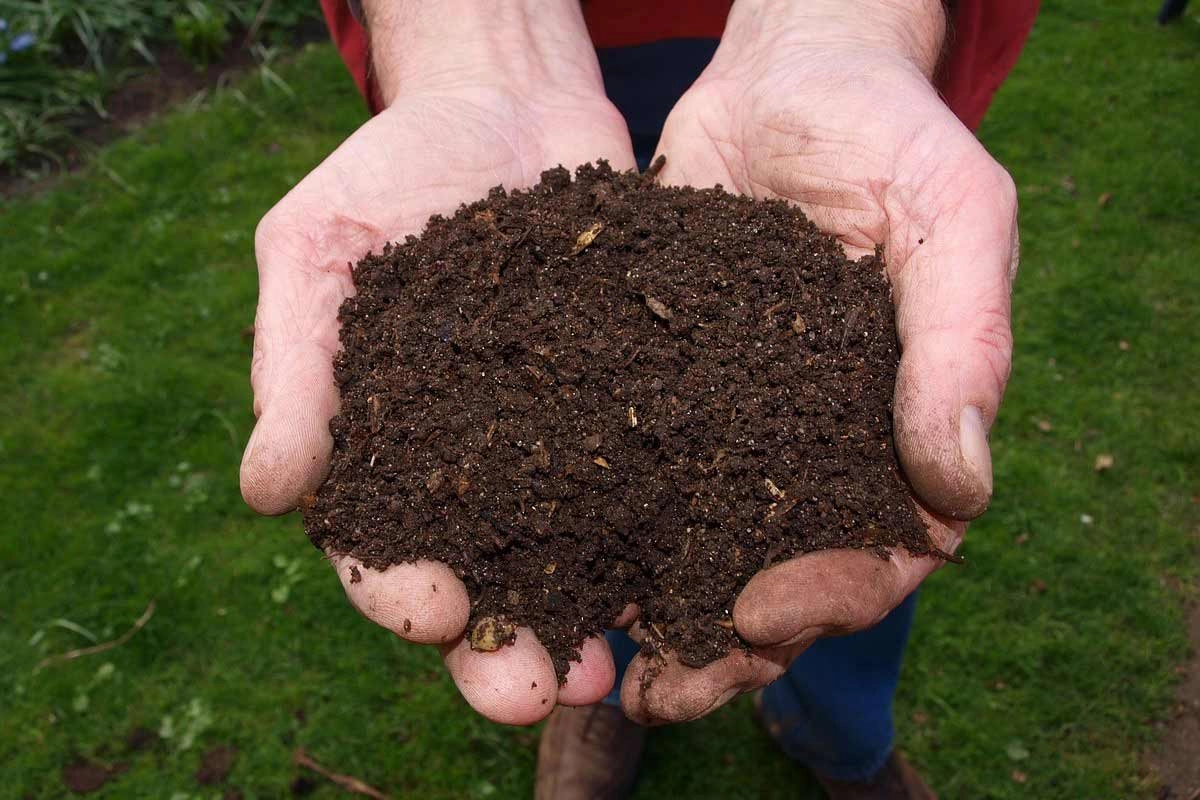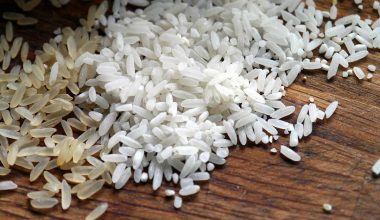Table of Contents Show
In the study of soil, humus (derivative from the Latin humus which means ‘earth, ground’ in 1790–1800) refers to the portion of soil organic matter that is shapeless and devoid of the cellular layered structure typical of micro-organisms, animals or plants.
Humus considerably impacts the bulk mass of soil and plays a hand in its retention of water and nutrients.
While the labels humus and compost are casually applied interchangeably, they are different soil components with different geneses; humus is formed through anaerobic fermentation, while compost is the outcome of aerobic decomposition.
(An aerobic environment is categorized by the incidence of free oxygen whereas in an anaerobic environment there is an absence of free oxygen but can have atomic oxygen bound in compounds).
What is Humus? How to describe it?

Humus is the dark, organic matter atop the soil. This biological material is primarily made up of deceased and rotting animal substances, withered leaves, grasses, twigs, vegetables, specialized soil microorganism and other nutrients.
In agriculture, “humus” is also occasionally used to define mature or natural compost taken out from a forest or other natural source for usage as a soil conditioner.
Humus is the naturally acquired soil, which can be effortlessly created by yourself with the help of a method known as composting. It is also knows as mineral soil, and so, it is commonly used by farmers and landscapers to advance the plant’s yield.
If you got an exam coming up; this information might be give you a bit more edge. Humic acid is the organic component /chemical that will crumple together when the soil becomes acidic, whereas, fulvic acid will still remain soluble (relaxed) even when the strong-base extract in the soil is acidified.
These two organic compounds represent 80% of the dissolved organic matter in natural waters.
The Clay-Humus Complex
Besides the aforementioned definitions, the description of humus is not yet complete. Even at this level of biological matter, colloids — the very smallest soil particles — play a specifically vital role.
In humus soil, many plant nutrients are joined together with clay minerals via adsorption. This relation of organic fragments with inorganic particles is customarily termed the clay-humus complex.
Deprived of organic material or humic substances, an accurate humus development would not be likely. Clay particles together with humus colloids are functional, largely because of their electronegative properties.
They take up the foundations existent in the soil, clamp them tight, and adsorb them. Humus and Clay soil are therefore usually denoted as an adsorption complex. This will definitely control the amount of soil erosion.
Humus as the clay-humus complex furthermore has a protecting effect. Nutrients are only provided to the plant if they are necessary, so that an unnecessary surplus is avoided.
But, plant roots in soils deficient of humus take in more nutrients than are necessary for the buildup of plant matter when you use mineral fertilization. Since organic fertilization prohibits needless consumption, it can be seen as an energy-saving effort.
Another category of humus is peat humus. It is the mixture of sediments that are made up of entirely decomposed peat moss that gathers at the ground of bogs. It is darker and more thinly textured than peat moss.
Humus Formation
Refined humus rich soil with 2% humus content are nowadays deemed high-quality farmland. What constitutes the rest of 98%? Dependent on the soil variety, organisms contribute around 8%, air and water roughly 15% and the leftovers of plants and animals nearly 5%.
The remaining 70% of soil bulk is therefore of only mineral origin. The mineral part of the soil is an outcome of the breakdown and wearing away of rock.
The disintegration of these components is done by soil organisms known as lithobionts, which are the intermediaries between stone and life. Raoul H. Francé invented the name “lithobiont,” which refers to “those who live on stone.”
Lithobionts are the collection of microorganisms that start the creation of humus. They form a life-giving material from the nonliving mineral, based on which the earth and all its constituents – humans, animals, and plants – can build step by step.
Only soils with the most ideal farmland structure have a humus content of 8-10 percent. Unspoiled soils in old-growth forests can reach 20% maximum.
A tropical forest cannot use up its entire soil organic matter level to accumulate humus. All forests store humus, but actual humus stores only appear over the course of millennia.

Nearly all plant groups (except for leguminous plants [plants that bear legumes] and intact forests) use up more humus than they can make from their own crop residue.
Per harvest and every growth of cultivated plants comes with excessive use of humus.
The lost soil humus cannot be swapped with any sort of mineral fertilizer.
This is why over cultivation in the long run often results in sandy soil consistency devoid of humus and ultimately, any plant growth. No soil amendment can compete with natural processes of fertilization.
Both deciduous and mixed forests can arrange their own humus since they are able to use their own wilted leaves and other plant material, preserving soil fertility. Even in nature, devoid of human intrusion, humus is only formed in deciduous forests and on untouched land.
The ‘Humusphere’
In simple spatial terms, the humusphere is the scope between the lithosphere (the rock sphere) and the atmosphere (the gas sphere) and makes up the biosphere composed with the hydrosphere (the water sphere).
In the humusphere, the complete breakdown of all dead and living material takes place in a constant cycle. It is compelled by the ancient life-forms that we know of: soil microbes.
Humus and Manure

Humus is desirably used toward the vegetable rather than the animal breakdown. This is why dung or manure, with its big share of animal feces, cannot maintain natural humus creation. Manure has to be converted into humus prior to fertilization use.
Why is this? The bacteria in the soil are more constructively used toward the breakdown of pure cellulose than the breakdown of animal manure, which leaves the entrails in an anaerobic state. This detail was sadly not identified or even understood by former generations.
Instead of being exposed to aerobic decomposition, manure was only suppressed in the field. When presented to the soil in this way, decomposing anaerobic matter stays as a foreign element for a rather long time.
The manure is fragmented by particular rot microbes, while the microbes intrinsic to the soil — living under aerobic environments — are driven out. The query of whether anaerobic or aerobic microbes prevail, and thus whether decay or breakdown follows, is vital for the health of the plants.
The following example discloses how little humus is formed when manure is used. If an amount of 400 quintals (around 88,000 pounds) of manure is evenly placed on every hectare of soil (on light soils); halfway into the year, 50% of the of the manure can be found; after a whole year, just a fifth.
After two years, almost none of the manure can be found in the soil sample. The soil organic matter is rapidly used up and integrated; it is then mineralized without the creation of humus.
Classic manure cultivation has been adopted in Germany for the last 200 years. If manure cultivation was fruitful, German soils would be superabundant in humus. But this isn’t so. Mushroom compost is also a great and environmentally friendly way of growing vegetables.
Manure is only the remnant of the materials that served the animal as food. All the extremely nutritious proteins, carbohydrates, fats, and so on that were made by the plant have been removed from the soil, and whats left is deprived of nutrients. Irrespective of these inadequacies, the tradition of manure spreading is still generally applied.
Here is an example: some years ago a famous child physician sought to find out whether the quality of vegetables cultivated for babies and young children was affected by fertilization.
How did he go about it?
He studied the effect of using: a) just manure; and b) manure and mineral fertilizer. The outcome: the vegetables fertilized solely with manure attested, not only substandard, but in fact unsafe for human health — several kids in this group were detected with hypochromic anemia.
The information about the impact of stable manure on the quality of vegetables even mentioned humus-fertilized soils.
Such distorted notions about humus are still prevalent.
Academics seemingly failed to recognize that manure is a rot product that holds toxic matters like toxic phenols, skatole, indole, and putrescine, and that the quality of manured soil is sure to be toxic.
Why is Humus Important?
In what way is humus used in gardens and why is humus important? Humus is spongy in nature and this is important as this quality permits humus to hold up to 90% of its heft in water, meaning soil loaded in humus will be able to preserve moistness better and be more unaffected by drought.
The humus sponge too grabs onto and protects nutrients that plants need, such as phosphorus, magnesium and calcium.
Plants can draw off these looked-for nutrients from the humus via their roots. Humus gives soil a desired fragile texture and abets soil structure by making the soil looser, letting for easier movement of air and water.
The key importance of Humus is it aids the progress of crop production, benefits the richness of the earth, raises the amount of water in the soil by quick absorption and moreover increases the soil practicability.
The main ingredients required for the humification process are plant materials.
The arrangement of humus differs depending on the structure of the primary materials and the secondary bacterial and animal materials. The disintegration rate of the differing composites will affect the composition of the humus.
Humus, in other words, can be described as a fertile and significant element of a healthy soil solution.
Difference between Humus and Compost

Compost is the black dirt or “black gold” as it is also known, made from the disintegration of the organic matter that we collect, whether that is from leftover scraps of food or yard waste.
Just a few inches of compost is often used as a remedy for compacted soil. Earthworms and other soil organisms on the soil surface will slowly take it into deeper layers and improve it’s water holding capacity.
Compost is deemed “finished” when we are left with the appearance of a rich organic soil where our separate contributions are no longer distinct. And “finished” is in quotes on purpose. If we are going to be technical, it really isn’t finished, because it’s not entirely decayed.
A lot of microscopic activity will still be occurring. This is because the insects, microorganisms, microbes and fungi that we really don’t like to recognize are still present have a lot of substance in that “black gold” to consume and decompose.
So essentially, the broken down compost pile on the wheelbarrow we use in our gardens is only a very minor fraction of humus. A sizeable compost heap literally takes years to completely break down into a humus state.
The decomposed organic matter is complex and it takes a lot of time to get the desired state of humus. Therefore, you will need to wait for its disintegration.
When the compost is entirely disintegrated, it will at that point be 100% humus. In any case, the soil carbon is not degraded by microbes but loosely stays around the humus formed.






